#macropodiformes
Text
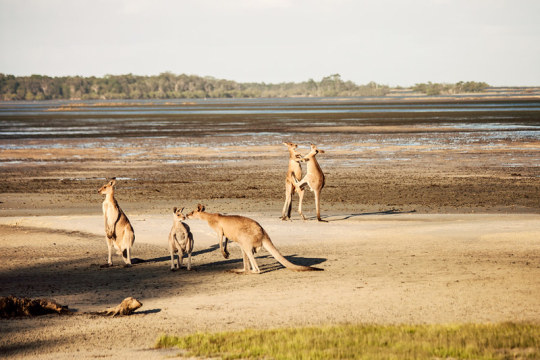
Eastern grey kangaroo (Macropus giganteus)
Photo by Roz Bannan
#id'ing#eastern grey kangaroo#macropus giganteus#macropus#macropodinae#macropodidae#macropodoidea#macropodiformes#diprodontia#australidelphia#marsupialia#metatheria#mammalia#tetrapoda#vertebrata#chordata
47 notes
·
View notes
Photo

An early relative of kangaroos, Balbaroo fangaroo. Known from a couple of partial skulls discovered at the Riversleigh World Heritage Area in Queensland, Australia, it lived during the Early Miocene (~23-16 mya) and was probably about the size of a cat, around 45-60cm long (18-24″) not including the tail.
It had unusually enlarged canine teeth forming prominent “fangs” -- hence its species name -- which may have been used for display and fighting in a similar manner to some ungulates such as water deer and camelids.
Based on the skeletons of other closely related species, it probably wasn’t able to hop. Instead it would have moved around quadrupedally, and the shape of its feet suggest it was also capable of climbing like a modern tree kangaroo.
#science illustration#paleontology#paleoart#palaeoblr#balbaroo#fangaroo#balbaridae#stem-kangaroo#macropodiformes#diprotodontia#marsupial#mammal#australia#riversleigh world heritage area#convergent evolution#art#excellent names
244 notes
·
View notes
Photo

Jersey Devil
Kingdom: Animalia
Phylum: Chordata
Class: Mammalia
Clade: Metatheria
Infraclass: Marsupalia
Order: Diprotodontia
Suborder: Macropodiformes
Family: Deinocapridae
Genus: Deinocapra
Species: D. horrificus (”horrifying terrible goat”)
Ancestral species: Dendrolagus matschiei (Matschie’s tree-kangaroo)
Time period: early Solocene (105 million years to 110 million years in the future).
Information: named after the North American cryptid it resembles, the Jersey Devil is perhaps the most short-lived species we’ve come across so far. It only exists for 5 million years during the Solocene before going extinct. The extinction of the species is attributed to the overpopulation of carnivorous species in the region, meaning that the species had too much competition for food. During its time, however, it is a formidable predator. Standing 6 feet tall and 10 feet long, this macropod lives across eastern Thalassia, where it actively hunts small prey animals, using its dagger-like teeth to kill. The horns are an evolutionary that only males have for fighting for mating rights during the mating season. Its hair is primarily grey, though brown-haired individuals do exist.
0 notes
Text
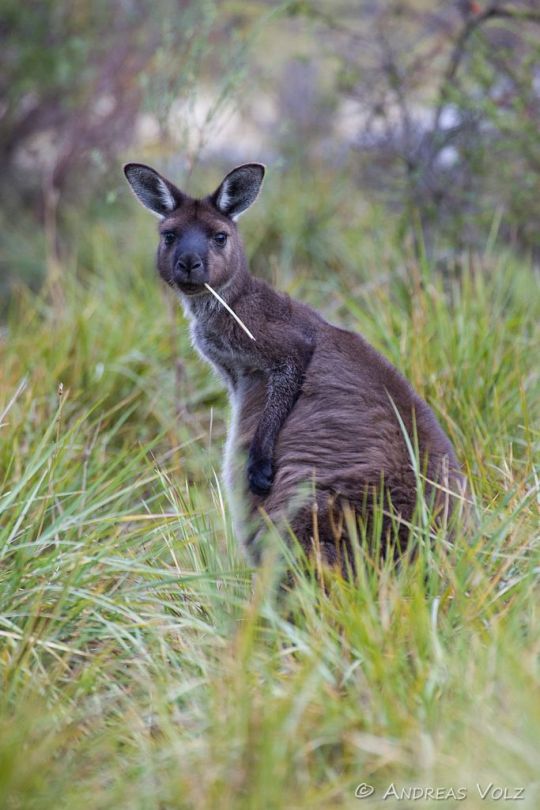
Western grey kangaroo (Macropus fuliginosus)
Photo by Andreas Volz
#western grey kangaroo#macropus fuliginosus#macropus#macropodinae#macropodidae#macropodoidea#macropodiformes#diprodontia#australidelphia#marsupialia#metatheria#mammalia#tetrapoda#vertebrata#chordata
31 notes
·
View notes
Photo

Black stinker (Wallabia bicolor)
Photo by Stewart Monckton
#considered inedible by aboriginals because it smells so bad#black stinker#swamp wallaby#wallabia bicolor#wallabia#macropodinae#macropodidae#macropodoidea#macropodiformes#diprodontia#australidelphia#marsupialia#metatheria#mammalia#tetrapoda#vertebrata#chordata
38 notes
·
View notes
Photo
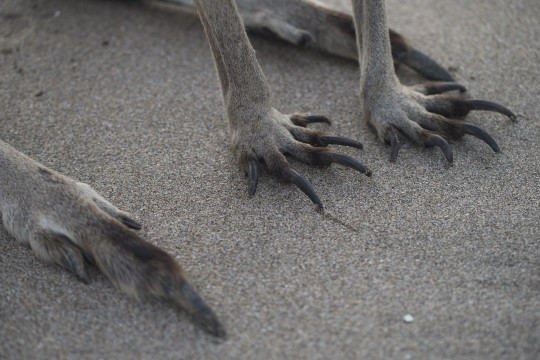
Eastern grey kangaroo (Macropus giganteus)
Photo by Jono Dashper
#eastern grey kangaroo#great grey kangaroo#forester kangaroo#grey kangaroo#macropus giganteus#macropus#macropodinae#macropodidae#macropodoidea#macropodiformes#diprodontia#australidelphia#marsupialia#metatheria#mammalia#tetrapoda#vertebrata#chordata
41 notes
·
View notes
Photo
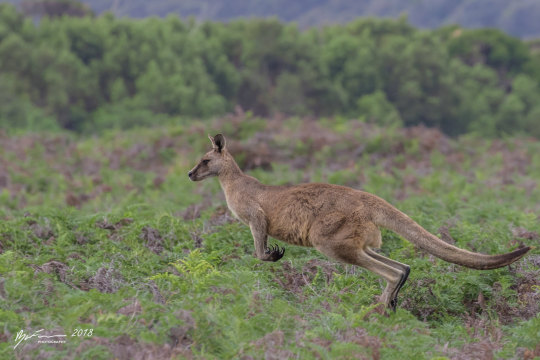
Eastern grey kangaroo (Macropus giganteus)
Photo by Ryan Francis
#eastern grey kangaroo#forester kangaroo#grey kangaroo#kangaroo#macropus giganteus#macropus#macropodinae#macropodidae#macropodoidea#macropodiformes#diprodontia#australidelphia#marsupialia#metatheria#mammalia#tetrapoda#vertebrata#chordata
33 notes
·
View notes
Photo
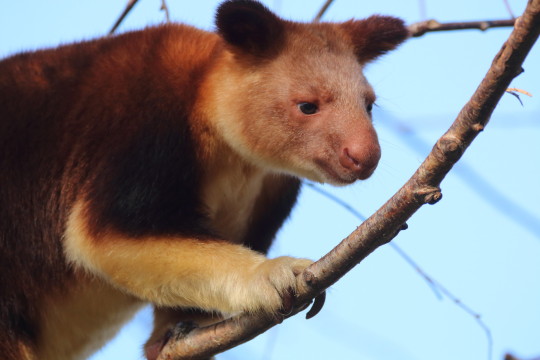
Ornate tree kangaroo (Dendrolagus goodfellowi)
Photo by charliejb
#ornate tree kangaroo#goodfellow's tree kangaroo#tree kangaroo#dendrolagus goodfellowi#dendrolagus#macropodinae#macropodidae#macropodoidea#macropodiformes#diprodontia#australidelphia#marsupialia#metatheria#mammalia#tetrapoda#vertebrata#chordata
30 notes
·
View notes
Photo

Eastern grey kangaroo (Macropus giganteus)
Photo by Sean Crane
#eastern grey kangaroo#forester kangaroo#grey kangaroo#kangaroo#macropus giganteus#macropus#macropodinae#macropodidae#macropodoidea#macropodiformes#diprodontia#australidelphia#marsupialia#metatheria#mammalia#tetrapoda#vertebrata#chordata
38 notes
·
View notes
Photo
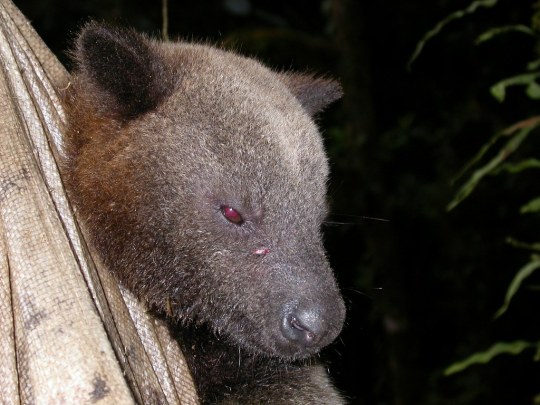
Unicolored tree kangaroo (Dendrolagus dorianus)
Photo by John Slapcinsky
#unicolored tree kangaroo#doria's tree kangaroo#tree kangaroo#dendrolagus dorianus#dendrolagus#macropodinae#macropodidae#macropodoidea#macropodiformes#diprodontia#australidelphia#marsupialia#metatheria#mammalia#tetrapoda#vertebrata#chordata
25 notes
·
View notes
Photo

Ornate tree kangaroo (Dendrolagus goodfellowi)
Photo by charliejb
#ornate tree kangaroo#goodfellow's tree kangaroo#tree kangaroo#dendrolagus goodfellowi#dendrolagus#macropodinae#macropodidae#macropodoidea#macropodiformes#diprodontia#australidelphia#marsupialia#metatheria#mammalia#tetrapoda#vertebrata#chordata
29 notes
·
View notes
Photo

Western grey kangaroo (Macropus fuliginosus melanops)
Photo by Robyn Waayers
#western grey kangaroo#black faced kangaroo#mallee kangaroo#sooty kangaroo#macropus fuliginosus melanops#macropus fuliginosus#macropus#macropodinae#macropodidae#macropodoidea#macropodiformes#diprodontia#australidelphia#marsupialia#metatheria#mammalia#tetrapoda#vertebrata#chordata
10 notes
·
View notes
Photo
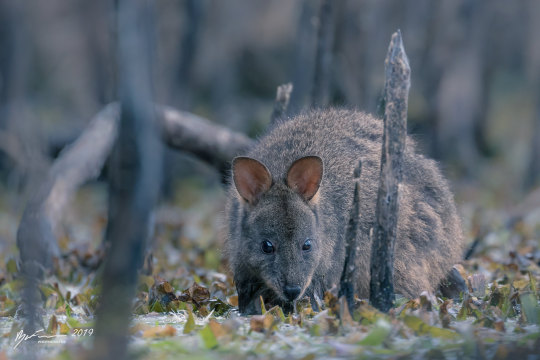
Tasmanian pademelon (Thylogale billardierii)
Photo by Ryan Francis
#tasmanian pademelon#pademelon#thylogale billardierii#thylogale#macropodinae#macropodidae#macropodoidea#macropodiformes#diprodontia#australidelphia#marsupialia#metatheria#mammalia#tetrapoda#vertebrata#chordata
22 notes
·
View notes
Photo

Short-eared rock-wallaby (Petrogale brachyotis)
Photo by Bäras
#short eared rock wallaby#rock wallaby#petrogale brachyotis#petrogale#macropodinae#macropodidae#macropodoidea#macropodiformes#diprodontia#australidelphia#marsupialia#metatheria#mammalia#tetrapoda#vertebrata#chordata
20 notes
·
View notes
Photo

Western grey kangaroo (Macropus fuliginosus melanops)
Photo by Yva Momatiuk & John Eastcott
#western grey kangaroo#black faced kangaroo#mallee kangaroo#sooty kangaroo#macropus fuliginosus melanops#macropus fuliginosus#macropus#macropodinae#macropodidae#macropodoidea#macropodiformes#diprodontia#australidelphia#marsupialia#metatheria#mammalia#tetrapoda#vertebrata#chordata
14 notes
·
View notes
Photo

Golden-mantled tree kangaroo (Dendrolagus pulcherrimus)
Photo by Tenkile Conservation Alliance
#golden mantled tree kangaroo#tree kangaroo#dendrolagus pulcherrimus#dendrolagus#macropodinae#macropodidae#macropodoidea#macropodiformes#diprodontia#australidelphia#marsupialia#metatheria#mammalia#tetrapoda#vertebrata#chordata#captive animal
59 notes
·
View notes